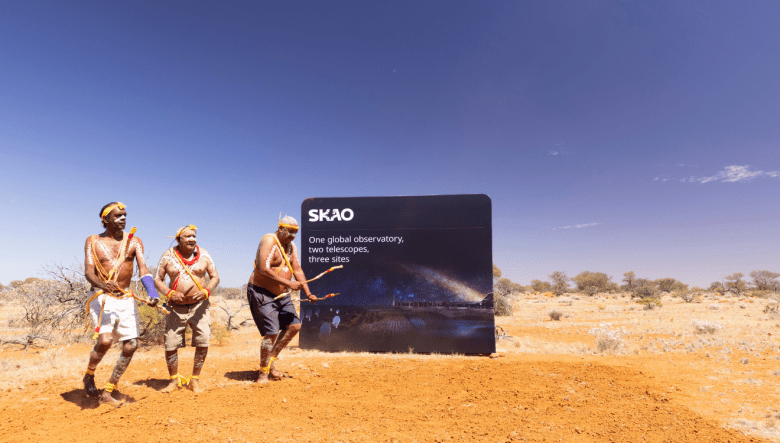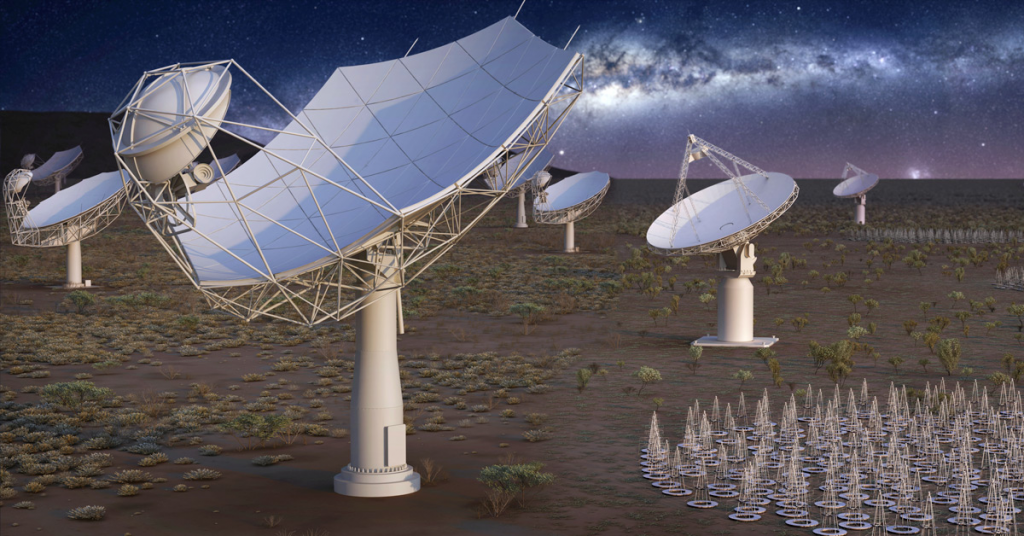Project officials formally celebrated the start of construction on what will be the largest radio telescope ever built at two groundbreaking events in South Africa and Australia.
When finished in 2028, the radio telescope, known as the Square Kilometre Array (SKA), will be the largest in the world. The facility, which will be located in South Africa and Australia and will have its headquarters in the United Kingdom, will answer the most pressing subjects in astrophysics. For example, it will conduct the most exact tests of Einstein’s theories and perhaps look for extraterrestrials.
“This is the moment it becomes real,” Square Kilometre Array Organisation professor Phil Diamond said.

SKAO as a concept has been in development for decades, having been first envisioned in the early 1990s. Dr. Catherine Cesarsky, Chair of the SKAO Council, announced the start of construction in South Africa, adding, “The SKA project has been many years in the making. Today, we gather here to mark another important chapter in this 30-year journey that we’ve been on together. A journey to deliver the world’s largest scientific instrument.”
However, there is still a long way to go until the first light.
Construction will likely take another decade, with the first ‘proof of concept’ coming live in 2024, when six Australian stations and four South African dishes will be tested. By 2028, the collecting area will be roughly 500,000 square meters, halfway to the project’s full square kilometer size. When completed, it will be the most powerful radio telescope in the world.

The SKA-Low array in Australia is meant to detect low frequencies ranging from 50 to 350 megahertz. In contrast, the SKA-Mid array in South Africa will detect frequencies ranging from 350 megahertz to 15.4 gigatons. SKA-Low will eventually have 131,000 antennas, each two meters tall and shaped like Christmas trees, while SKA-Mid will take the form of 197 large dishes.
MeerKAT, one of the world’s most powerful existing radio telescopes, will be integrated into SKA-Mid after development. The 64 MeerKAT dishes are already being built on the South African site.
The SKA will mirror an already busy year for significant radio telescope projects. China has completed construction on the Daocheng Solar Radio Telescope array, which will be used to examine the sun’s frequent solar flares and plasma explosions.
It’s been a long and arduous path to SKA’s approval. The Aboriginal Australian Wajarri people have long lived in the region where the SKA is being built, and many in the community have expressed uncertainty and skepticism about the project.
“At the center of [the negotiations] is how do we uphold the responsibilities and obligations that we are born into, which is to preserve and protect and maintain the dignity of our culture, people and land,” Dwayne Mallard, a negotiator for the Wajarri stated, adding, “We’ve certainly done that to the best we can.”

Others are worried that commitments will be abandoned. The newly signed Indigenous Land Use Agreement (ILUA) includes a confidential financial payout and a guaranteed job, training, and education opportunities for the Wajarri people.


